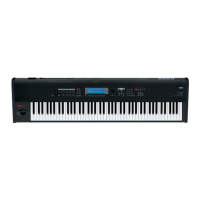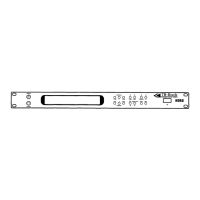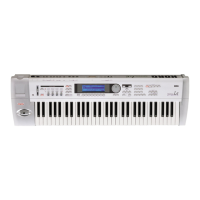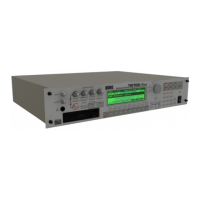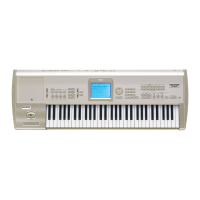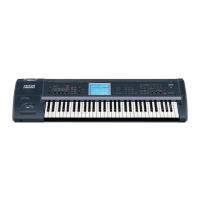28
KORG INC.
15 - 12, Shimotakaido 1 - chome, Suginami-ku, Tokyo, Japan.
2004 KORG INC. 1602 GTH
Printed in Japan
2E
To input a chord, simultaneously press the notes of the
desired chord. Even if you do not press them simulta-
neously, notes that are pressed before you fully remove
your hand from all keys on the keyboard will be input
at the same location.
However in the above example, the program of track 8
will not sound chords. This is because the program is
set to mono mode, and the song follows the setting of
the program.
In other words since this track is set to “Force OSC
Mode” PRG, the “Voice Assign Mode” Mono setting
of program J124: Espress Lead is used.
7
When you are finished inputting, press the Done
button.
8
Press the SEQUENCER [START/STOP] key to play
back.
When you begin step recording, all data in the track
that follows the measure where you began recording
will be erased.
You need to be aware of this if you begin step recording
from a measure mid-way through the song.
If you want to re-input data into a measure that already
contains data, perform step recording in another un-
recorded track, and execute “Move Measure” or “Copy
Measure” (
☞PG p.82).
If you want to edit or add to the recorded data, you can
use the “Event Edit” function (
☞PG p.79).
Using controllers to record tonal changes
You can add realtime controller or joystick movements to
a performance you recorded. As an example, here’s how
to add such effects to the track you recorded in “Step
recording” (☞p.27).
1
Press the [EXIT] key, and then press the Preference
button to move to the P0: Play/REC, Preference
page.
2
Set the “Recording Mode” to Over Dub.
Over Dub allows you to add to a previously-
recorded track.
3
For “Track Select,” make sure that Track08: Lead
Synth is selected.
Press the SEQUENCER [START/STOP] key to start
playback, and operate the realtime controllers and
joystick to rehearse. When you are finished rehears-
ing, press the SEQUENCER [START/STOP] key to
stop. Press the [LOCATE] key.
4
Start recording.
Press the SEQUENCER [REC/WRITE] key, and
then press the SEQUENCER [START/STOP] key.
After a two-measure count-in, recording will begin.
Operate the LPF CUTOFF or RESONANCE/HPF
realtime controllers or the joystick (±Y axis) to
record their movements.
When you are finished performing, press the
SEQUENCER [START/STOP] key.
If you make a mistake or want to re-record, press the
[COMPARE] key to execute the Compare function,
and then re-record.
Recording the sound of a combination or
program “as is”
Ideas for a song may occur to you while you’re playing
in Combination mode or Program mode. The Auto Song
Setup function is particularly convenient in such cases.
This function uses the settings of the combination or pro-
gram to automatically create settings for a song in
Sequencer mode. For details, refer to OG p.58.
Saving a song
If you’re satisfied with the song you’ve created and want
to keep the data, you must save to media (sold sepa-
rately).
The data you create will disappear when you turn off
the power. For details on Saving, refer to OG p.117. For
details on the types of media to which you can save
data, refer to OG p.137.
This ends the Quick Start manual.
The functions we’ve introduced here are only a small
portion of what the TRITON Extreme has to offer.
We strongly recommend that you next read the separate
“Operation Guide.” Then when you’d like to obtain a
more detailed understanding of the TRITON Extreme,
refer to the “Parameter Guide.”

